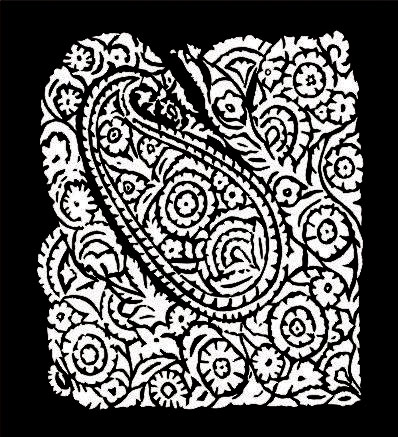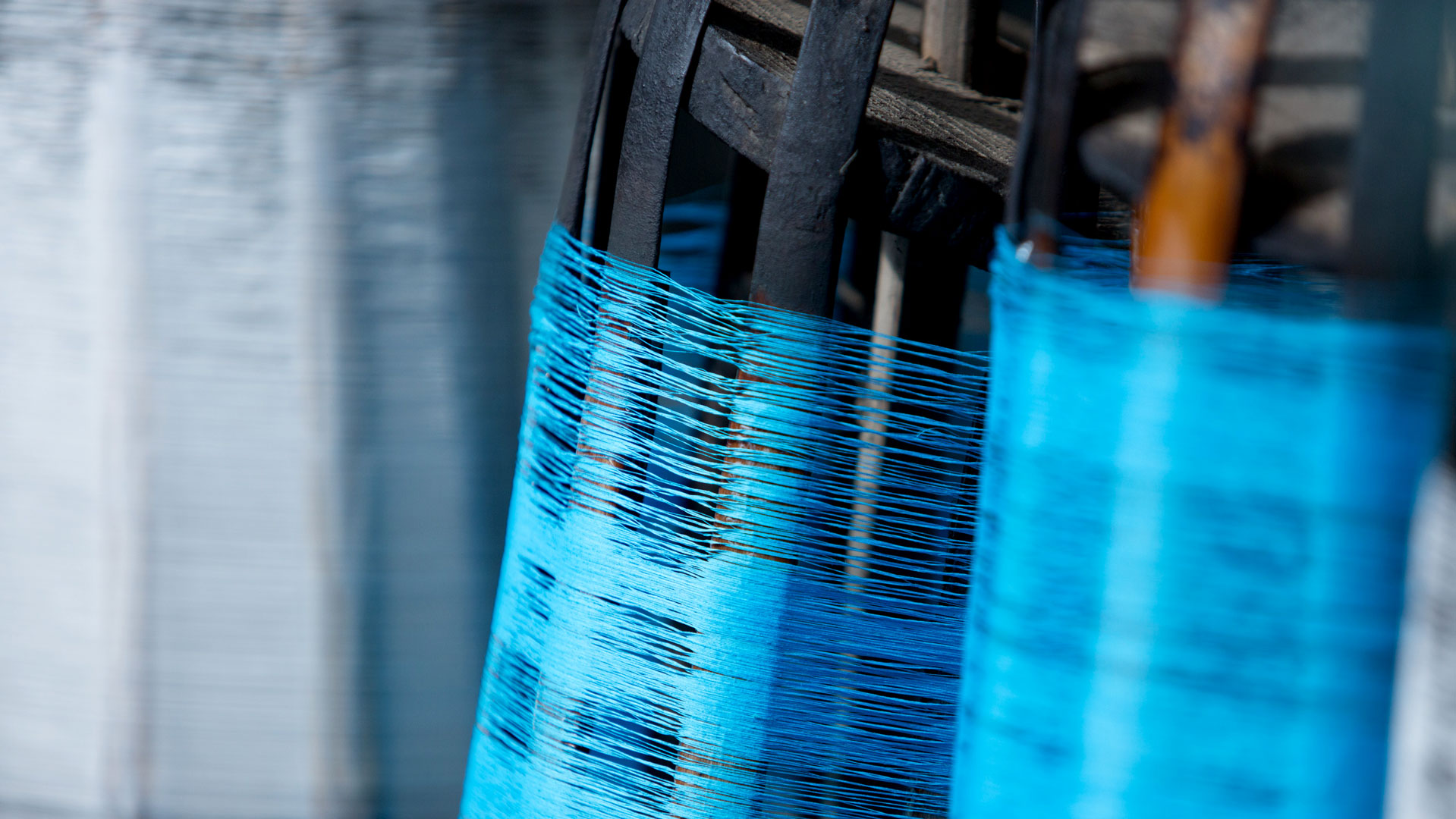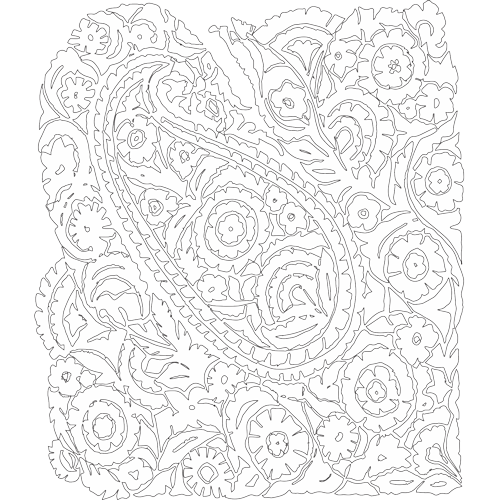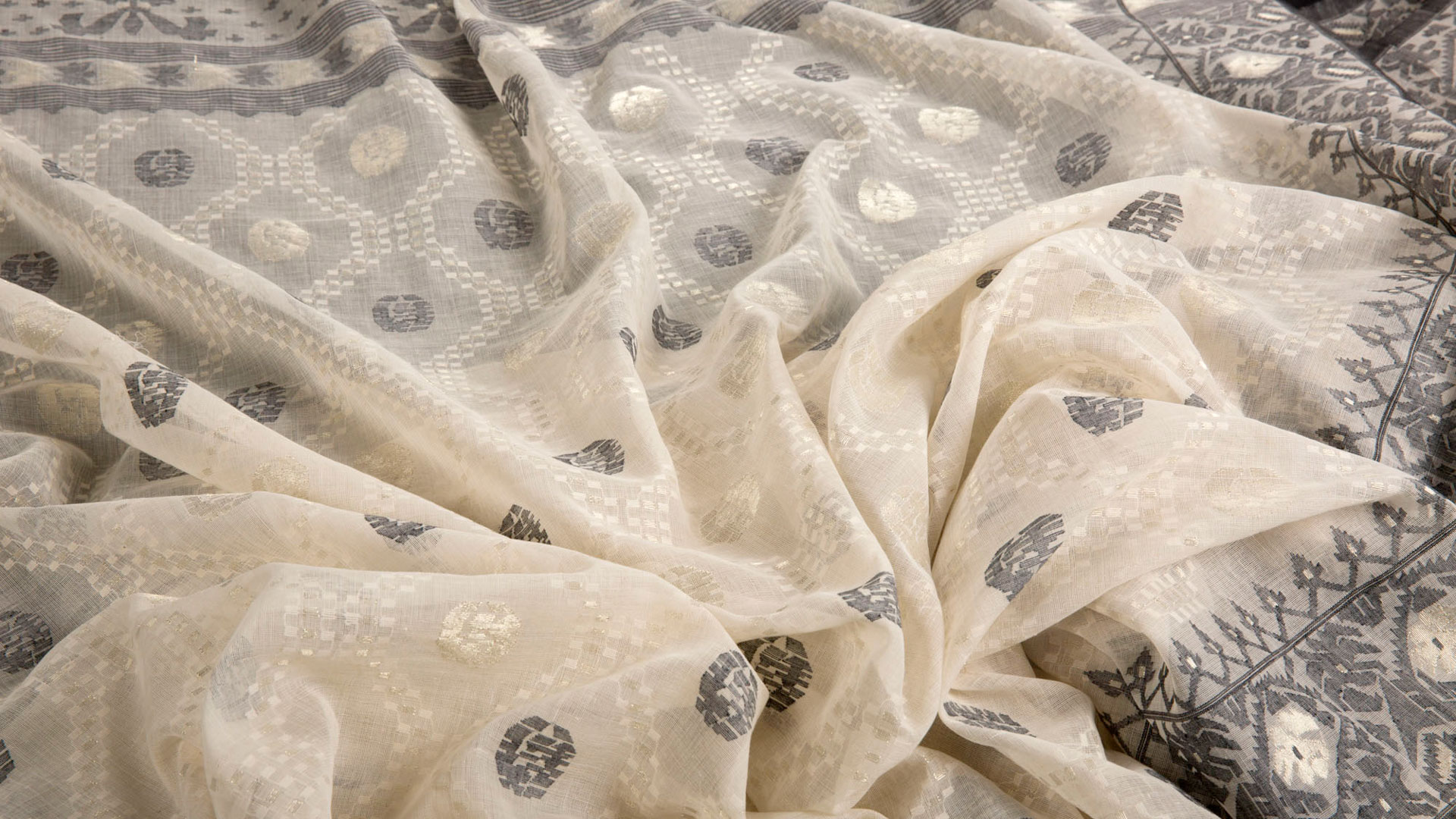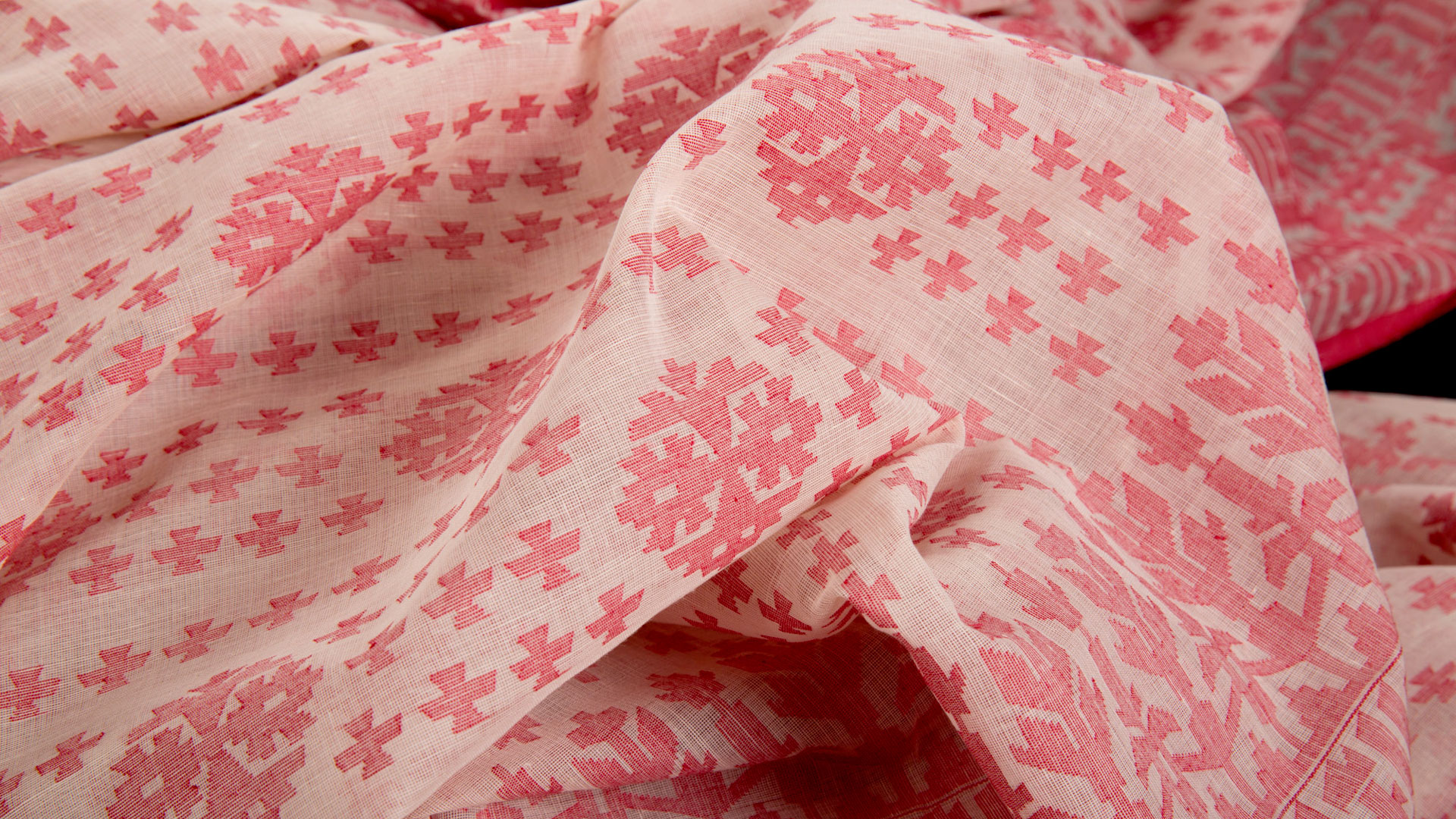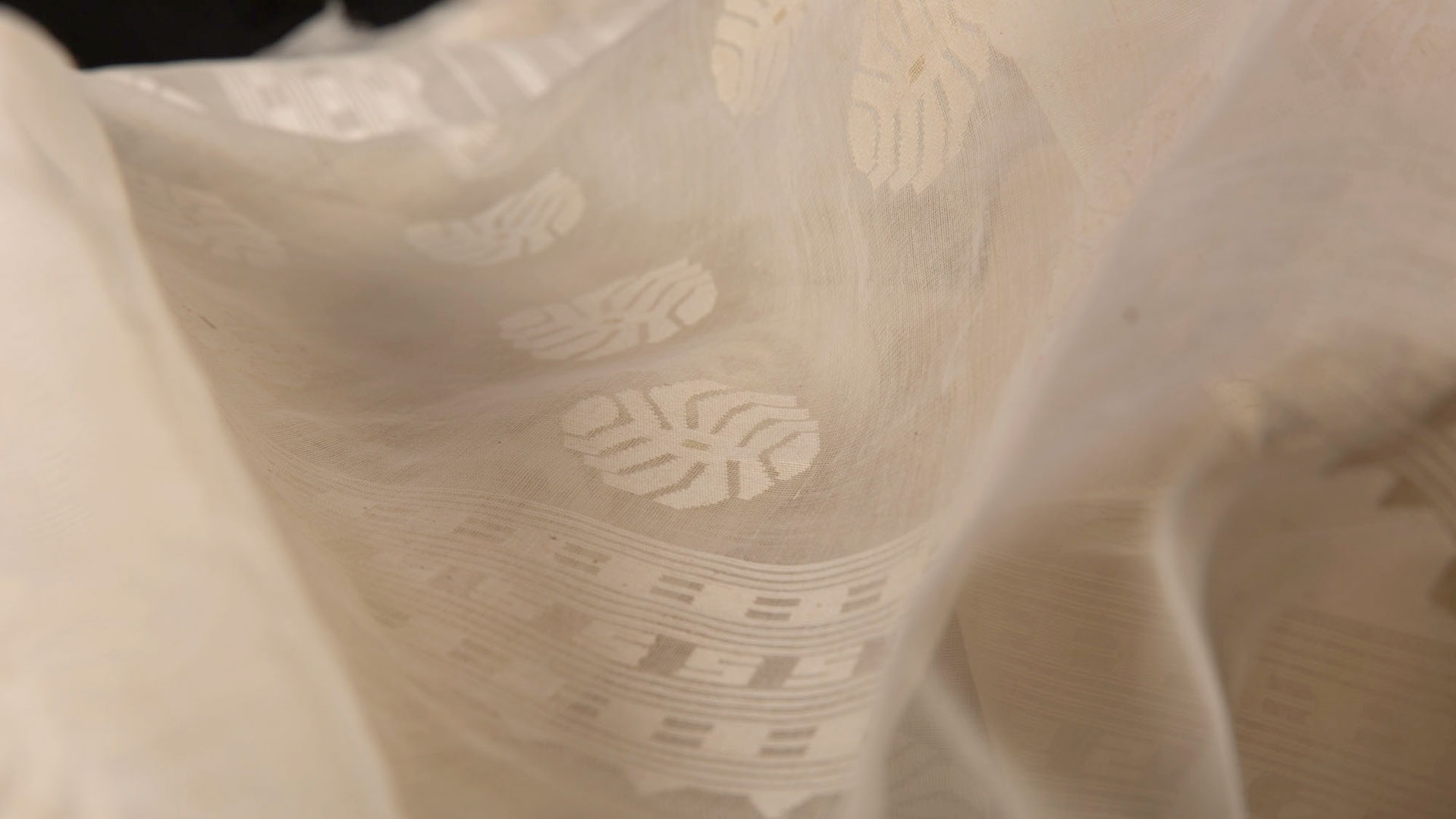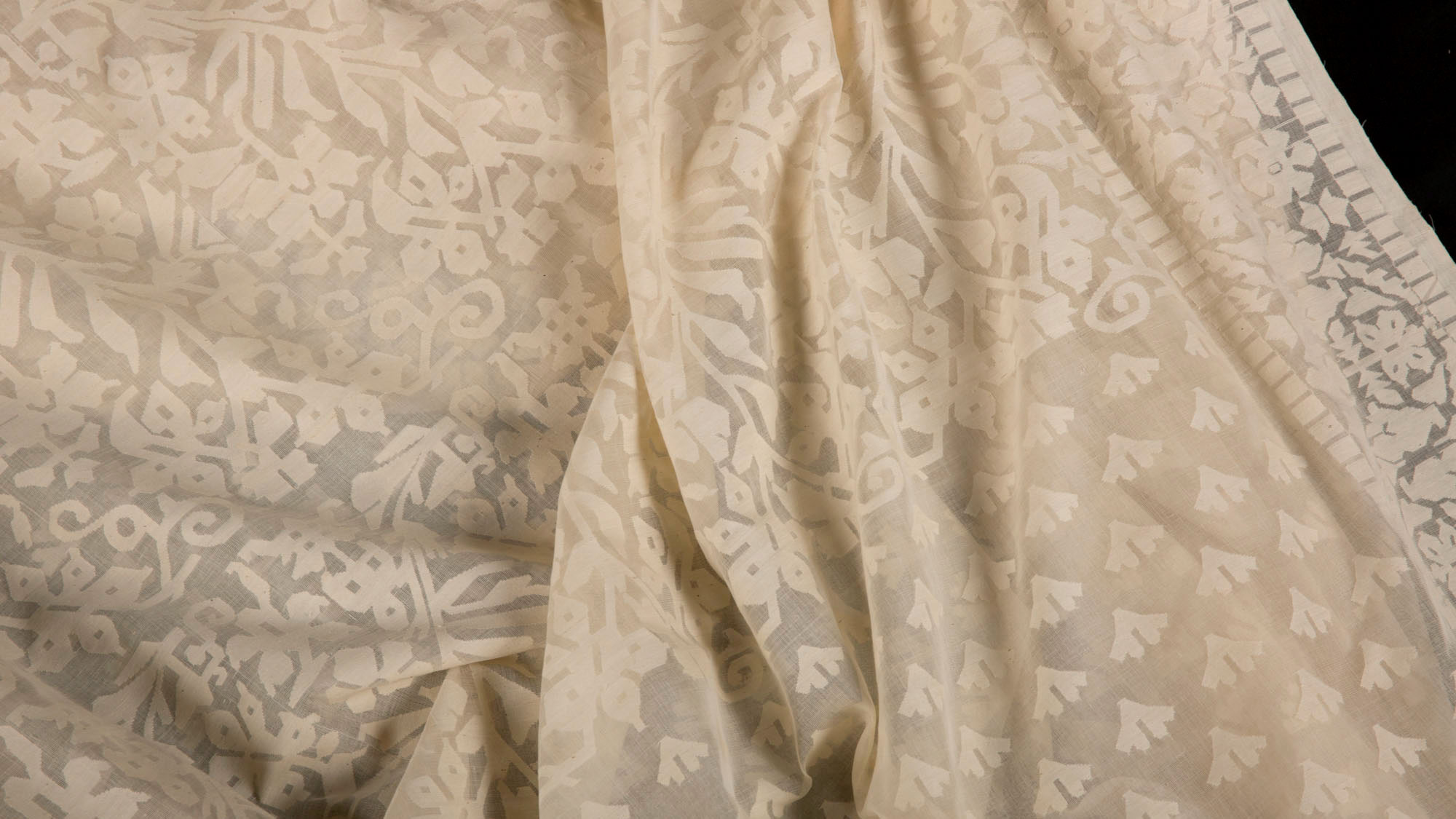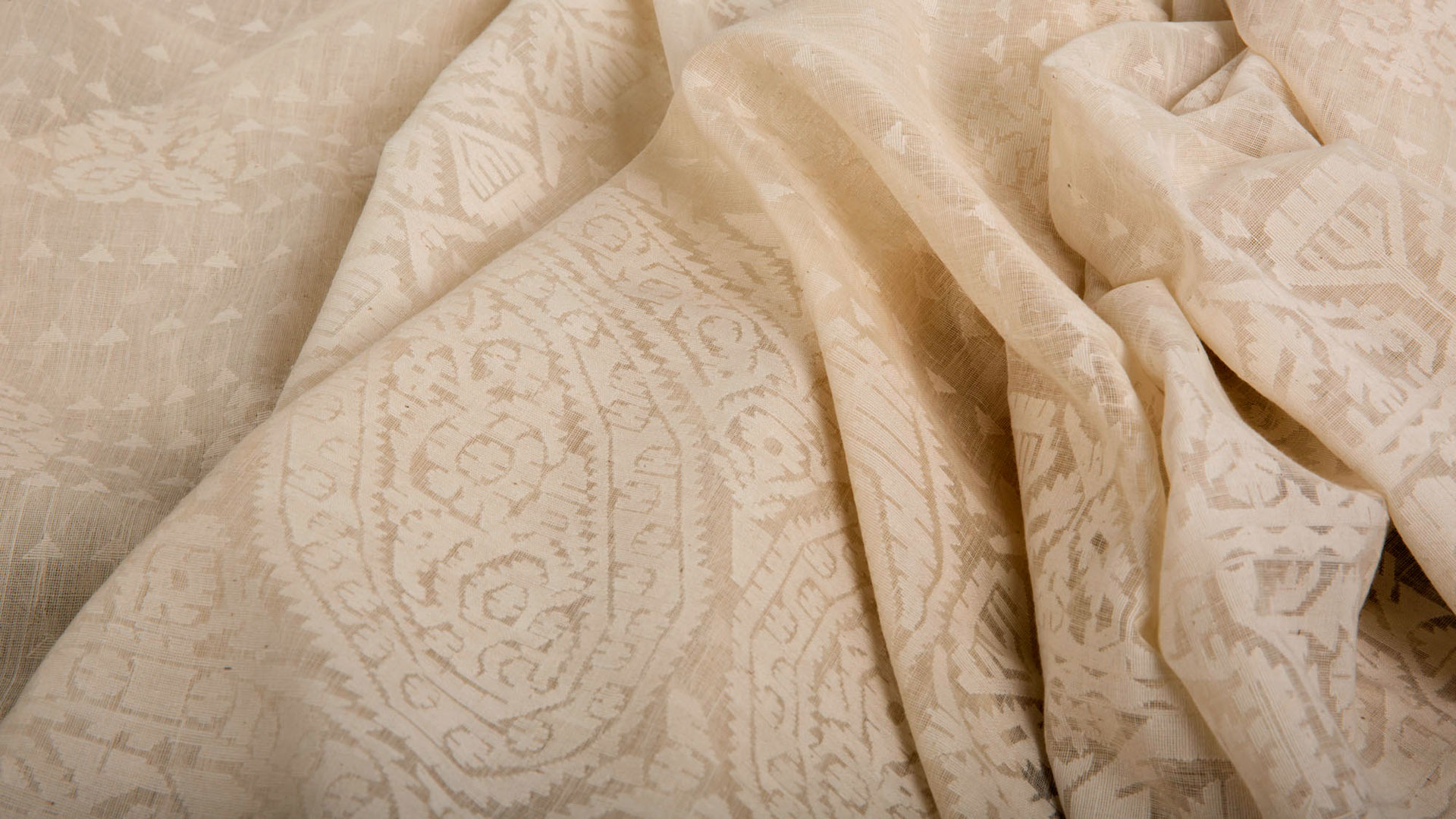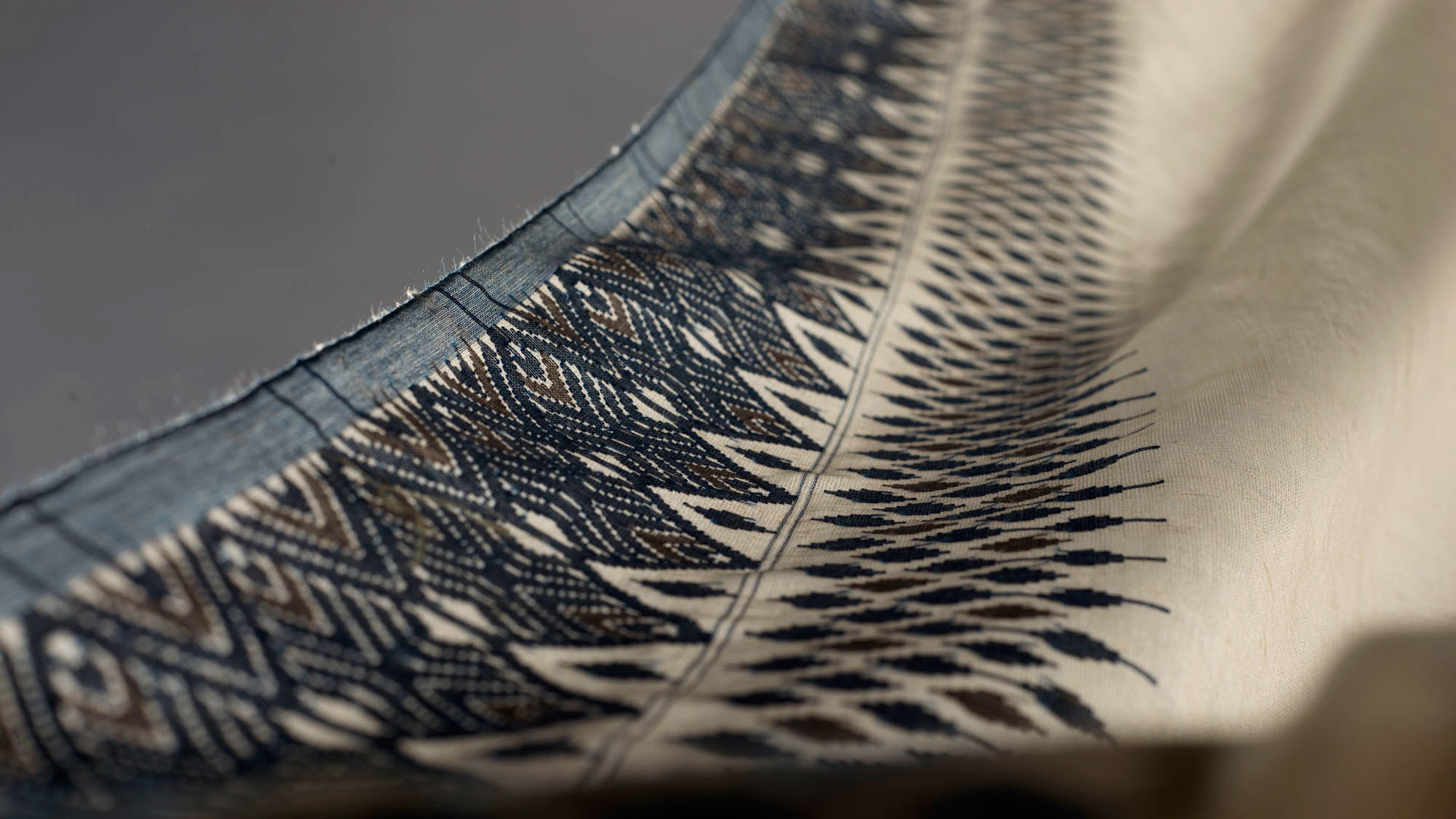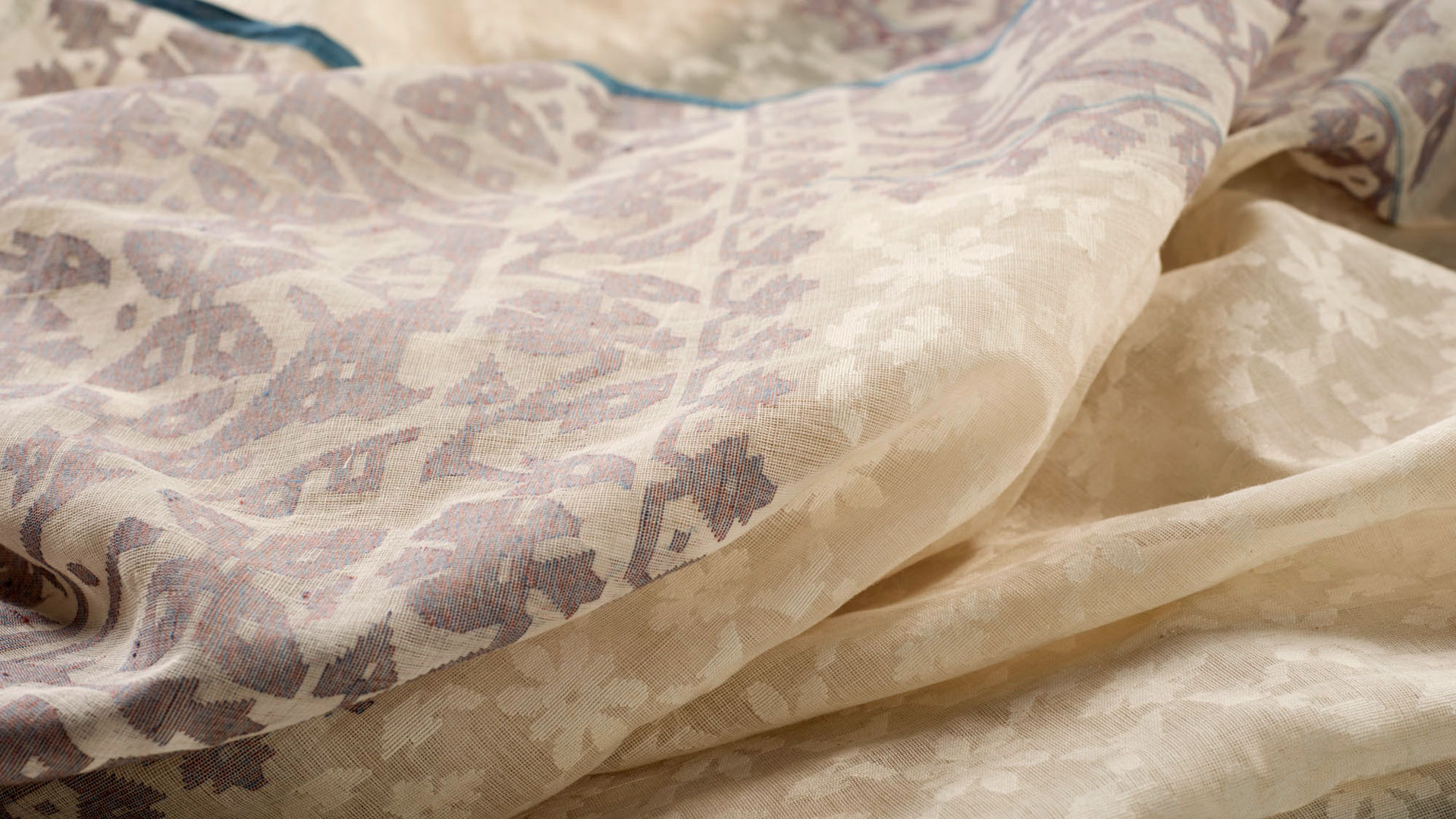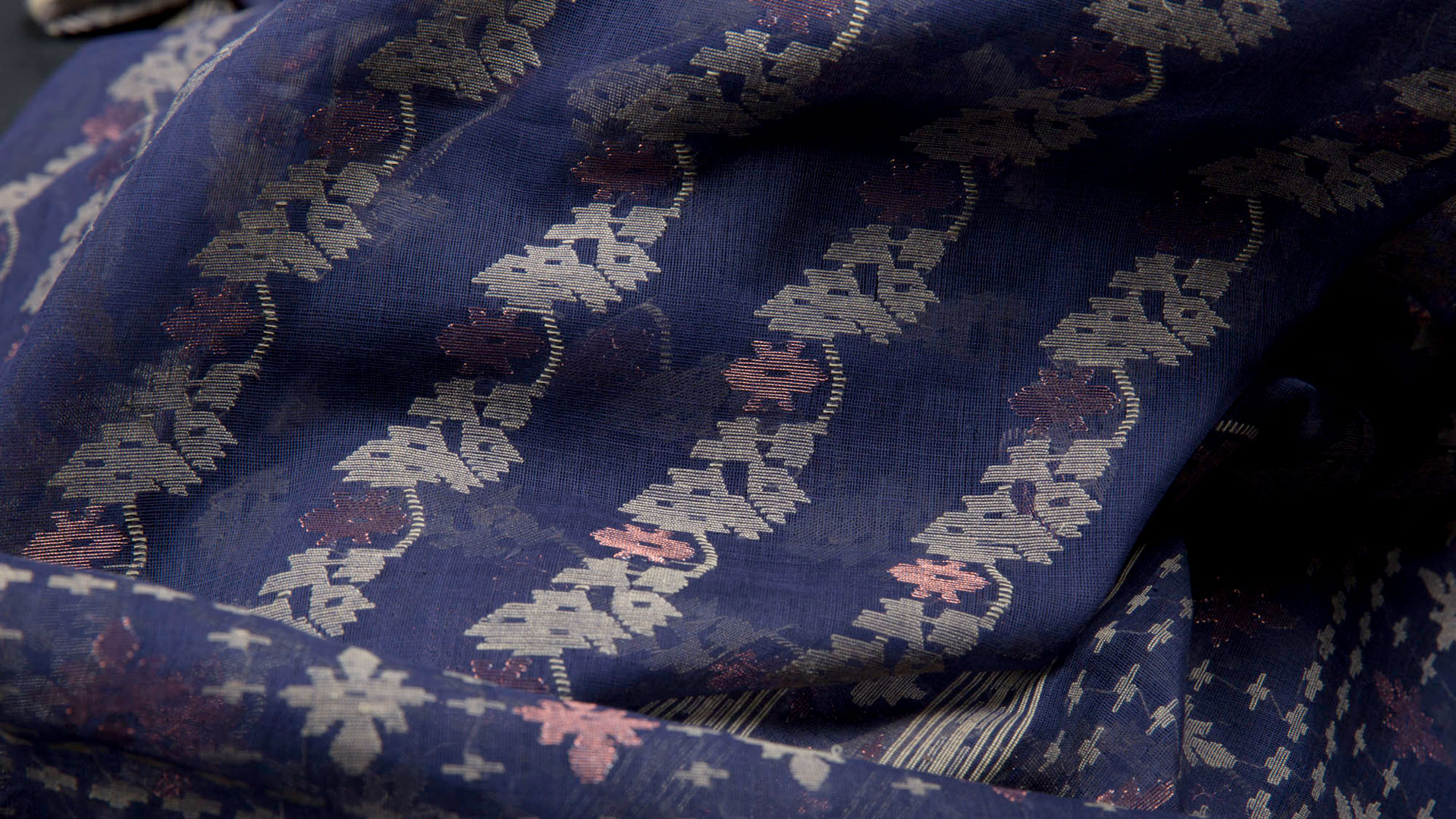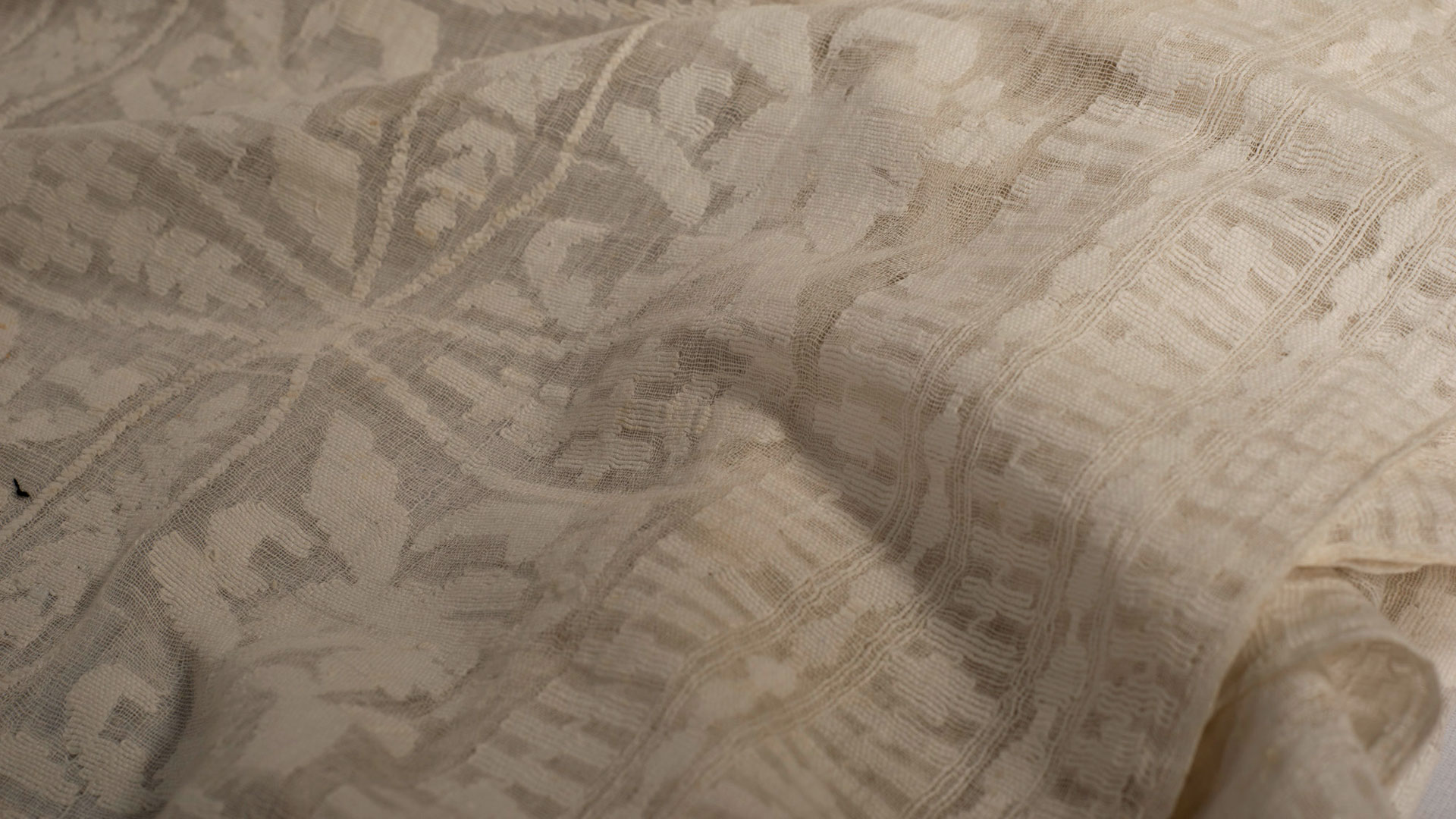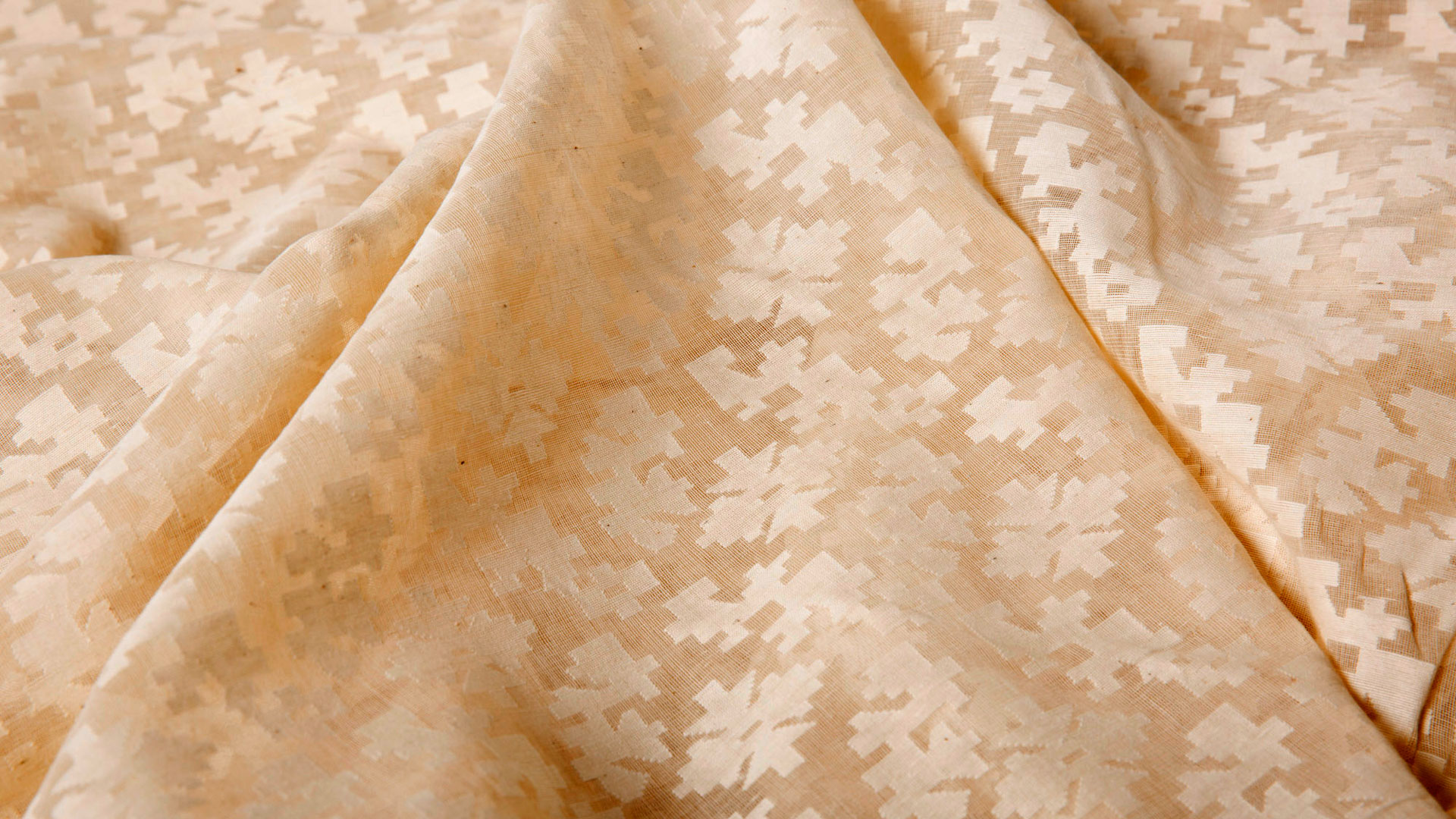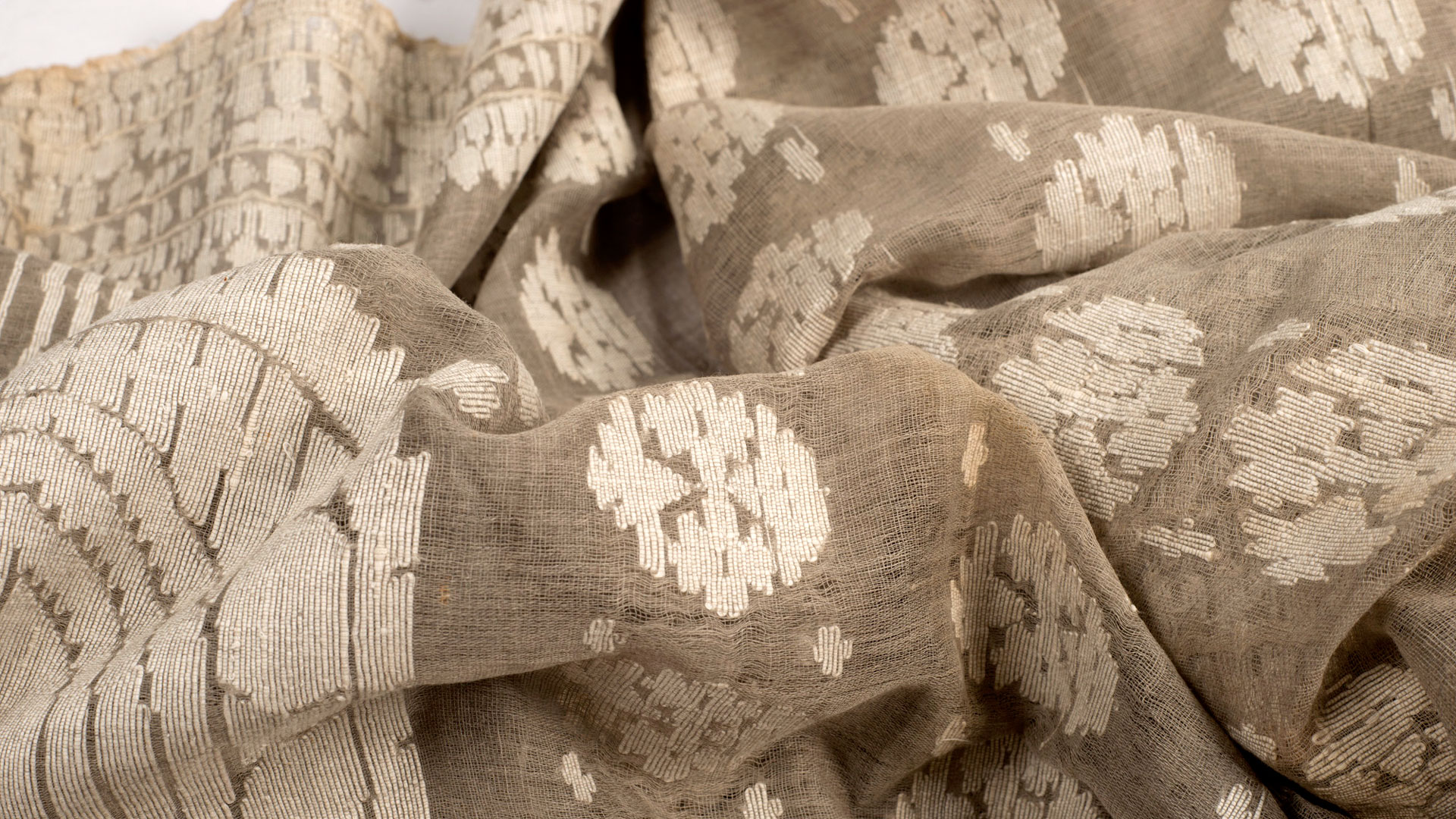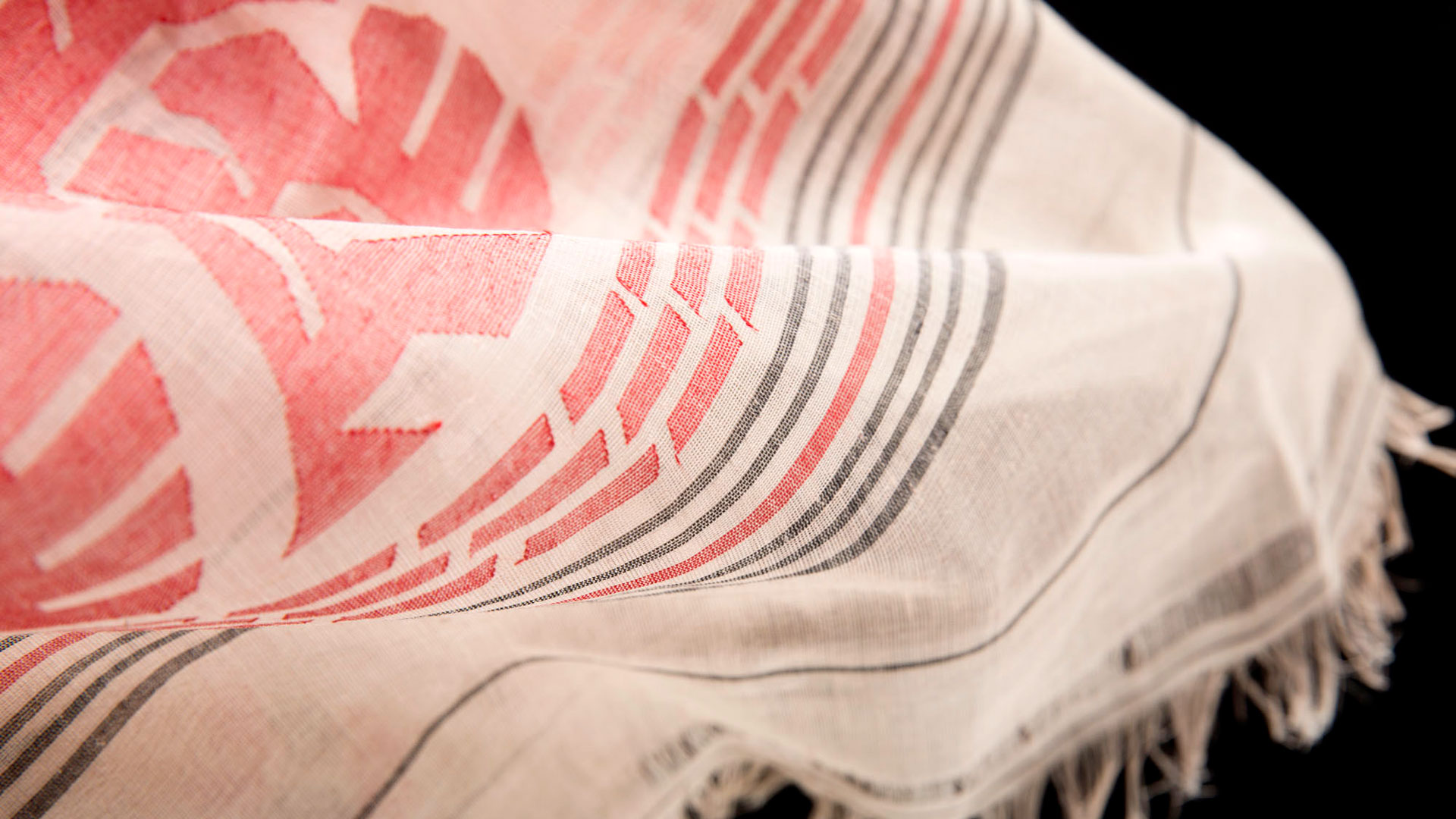
Jamdani is one of the finest muslin textiles in Bengal, a proud heritage of the Bangladeshi weavers of Sonargaon, Rupganj and Siddhirganj in the Narayanganj district. Traces of the fabric’s existence are scattered throughout folklore and historical records as 50 metre long piece of fabric could be squeezed into a single match box. The Jamdani reached its pinnacle of excellence during the 16th century under the patronage of Mughal Emperors. Its motifs are said to have been inspired by weavers to resemble local flora and fauna, and the Muslin was considered legendary at the time.
The Jamdani was a popular textile of choice for garments – for both men and women – in the region, but it became a favourite of women courtiers in Europe and England. In modern times Jamdani sarees have become an essential part of a bridal trousseau.
The Jamdani industry saw a gradual decline in the mid-19th century, in the era of the British colonial period. The fall of the Mughal Empire deprived artisans of their most influential patrons, and the use of machinery in the English textile industry, as well as the subsequent import of lower quality, but cheaper yarn from Europe contributed to a steady decline.
In present times a lack of fine cotton yarn and rising cost of production has affected the quality of Jamdani. The National Crafts Council of Bangladesh and Bengal Foundation, in an attempt to restore the Jamdani to its original excellence, is organising the Jamdani Festival, as celebration of the proud heritage of Jamdani weaving in Bangladesh.
The initiative has led us to collect original designs from museums and private collections from within the country and abroad. Masterweavers, as well as some of the finest artisans of the younger generation, have been supplied with the best quality Khadi yarn, and tasked with replicating these designs. Weavers have also been commissioned by Aarong, Aranya, Tangail Saree Kutir and Kumudini – four of the largest organisations in the country working with crafts – to ensure a market for future production. The geographic and ecological context of the Sitalakhya River has also helped make Sonargaon unique in the production of its fine cotton and helped sustain Jamdani communities for centuries. The Festival has proposed to the World Crafts Council to grant Sonargaon the status of ‘World Crafts City’.
At the Event
- An exhibition showcasing reproductions of century old Jamdani designs, as well as a collection of original antique sarees loaned from collections in Bangladesh and abroad. The exhibition will also be accompanied by live demonstrations by weavers at the venue
- A seminar discussing the past, present and future of Jamdani
- Screening of four short films exploring the designs and weaving process of Jamdani, and the life of a weaver
- A collectible catalogue
- The Mastercraftspersons Award will be presented to four of the most gifted master weavers and apprentices for their skill and contribution to the community
- A series of weavers’ workshops in an attempt to restore the quality and exquisite design of the Jamdani, which sets it apart from all other textiles in the world
Festival Timeline
Friday, 6 September 2019
Inauguration of the Festival and Mastercraftspersons Award ceremony
Bengal Shilpalay
House 42, Road 27, Sheikh Kamal Sarani, Dhanmondi, Dhaka 1209
Saturday, 7 September 2019
Seminar discussing the past, present and future of Jamdani
Women’s Voluntary Association (WVA)
House 20, Road 27, Dhanmondi, Dhaka 1209
